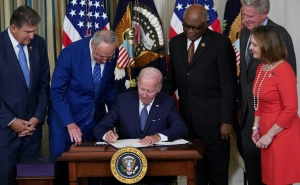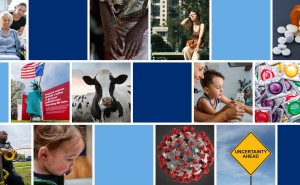OASIS and BSAFE Put People and Places First in Harm Reduction Efforts
NIH-funded OASIS and CDC-funded BSAFE use people and places to prevent overdose deaths in Baltimore

Deaths by overdose of people who use drugs is a significant public health issue in the United States, with over 500,000 deaths in the last decade and even more suffering from additional medical consequences of using drugs, such as the spread of hepatitis C and HIV. Researchers at the Johns Hopkins Bloomberg School of Public Health are working to prevent overdoses and the spread of disease in Baltimore through OASIS, an NIH-funded project that trains people who use drugs to be peer educators and stock locations where drugs are used with harm reduction supplies. OASIS builds off work from BSAFE, a CDC-funded project that trained people who actively use drugs in Baltimore to promote overdose prevention and distribute Naloxone to their community members.
OASIS and BSAFE are both led by Carl Latkin, PhD, professor, Lauren Dayton, PhD ‘21, MSPH ‘15, associate research professor, and Melissa Davey-Rothwell, PhD ’07, MPH, research professor in the Department of Health, Behavior and Society at the Bloomberg School. Both OASIS and BSAFE emphasize taking a community-led approach to harm reduction, including utilizing the strengths of individual community members in Baltimore, where there were over 1,000 overdose deaths in 2023.
“If you give people in the community the tools, they can make a positive impact on the health and wellbeing of their community,” says Latkin.
Peer educators working for the OASIS project identify settings where people use drugs, and in those settings place overdose prevention materials, including Naloxone—a medicine that rapidly reverses opioid overdoses in a matter of seconds or minutes—wound care kits, and cards and visuals that demonstrate how to reduce overdose risk. The places are often abandoned buildings, the homes of known friends and acquaintances who use drugs, and other locations where materials for overdose prevention can be reached specifically by people who use drugs. Thus far, OASIS has trained 148 community members to provide overdose prevention training and place overdose prevention and care materials in places where people who use drugs can easily access them.
“These programs are designed to meet individuals where they are, offering overdose prevention strategies, naloxone, and drug treatment referrals. Through peer education training, we empower people who use drugs to spread crucial information and resources within their communities, ensuring that more individuals have the skills to prevent and respond to overdoses while also gaining access to treatment,” says Dayton.
With BSAFE, members from communities around Baltimore who use drugs volunteered and were assigned to either the control or the experimental condition of the study. The volunteers who were assigned to the experimental condition were trained to be peer educators and teach family and friends how to administer Naloxone and how to have conversations with their community about preventing overdoses. In total, BSAFE trained 134 community volunteers who use drugs to promote overdose prevention and drug treatment among their social network and other community members. Those who received the intervention were much more likely to talk with network members about overdose prevention and engage in more overdose prevention behaviors than the control condition, which provided the standard of care for overdose prevention. BSAFE ended in August 2022.
Both OASIS and BSAFE center the people and places most affected by overdoses as key drivers of the solution. A follow-up interview with a BSAFE study participant (participant’s name has been changed for privacy) is below:
Heather: I actually used the Narcan.
Staff member: Oh, you did?
Heather: Yeah. I actually experienced using it.
Staff member: And how did that go?
Heather: It went well. My niece was-- actually I went to the front door. And she was two houses up on the ground in the pouring down the rain. And I'm looking I'm like somebody out there laying there. I didn’t know it was her. I said somebody done passed out there on the step up the street. And I'm looking a little harder, and looking I said that’s Miss Stacey. She done fall out and bumped her head and knocked her out. So I tried waking her up, you know, waking her up by tapping the face and calling her name and I got no response. So I talking. I said I'm happy to use the Narcan because she’s not waking up. So I used one and I got a little response. So I said, I might as well use another one…And I used the other one, and then she woke up.
Latkin is the director, and Dayton and Davey-Rothwell are associate directors of Lighthouse at Peer Point, which conducts research into health promotion and disease prevention with a focus on disadvantaged urban populations.




